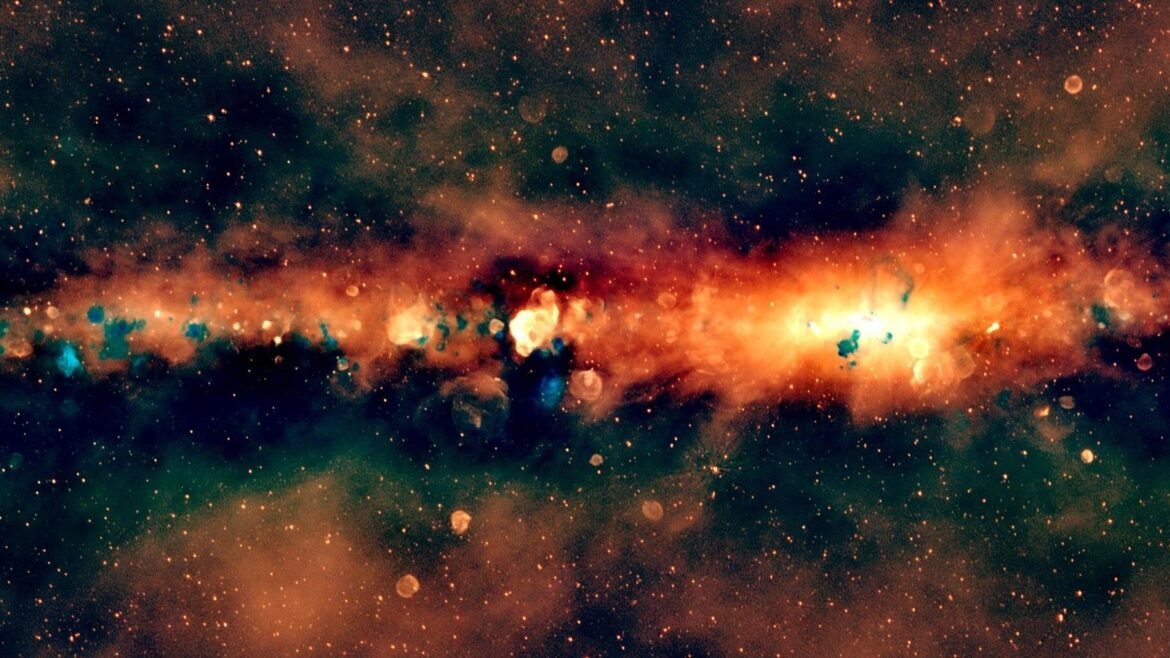Quick facts
What it is: The Southern Hemisphere view of the Milky Way galaxy
Where it is: All around us
When it was shared: Oct. 29, 2025
We cannot see or image the entire Milky Way galaxy, because we are located inside it. From Earth, we can observe only a portion of the galaxy, and when we look up at the dark, clear night sky from a place free of light pollution, the Milky Way appears as a complex, busy band of stars and dust. This is our edge-on view of the dense galactic plane of our galaxy. And that’s just the visible light view.
Silvia Mantovanini, a PhD student at Curtin University in Australia, took nearly 40,000 hours to compile the data from two surveys called the GaLactic and Extragalactic All-sky MWA (GLEAM) and GLEAM eXtended (GLEAM-X). The GLEAM and GLEAM-X surveys, conducted using the Murchison Widefield Array telescope, yielded abundant data over 28 nights in 2013 and 2014, and 113 nights from 2018 to 2020.
Thanks to significant improvements in sky coverage, resolution and sensitivity, the new image provides twice the resolution, has 10 times the sensitivity and covers double the area of the previous GLEAM image released in 2019, according to a statement from the International Centre of Radio Astronomy Research (ICRAR). Researchers say that only the SKA-Low telescope, an array of tens of thousands of radio antennae set to be completed next decade, can surpass this level of sensitivity and resolution.
This extensive survey view is the largest low-frequency radio color image of the Milky Way ever created. Since most of the imaged region had never been observed at these frequencies, this galactic landscape marks a significant milestone, the researchers said.
The low-frequency radio waves revealed remnants of exploded stars and regions of ionized gas where new stars are forming. The “colors” of radio light captured in the image help astronomers distinguish between different objects in the sky. The large red bubbles reveal dead stars and their expanding shells, whereas the compact blue regions are where new stars are born.
The surveys contain more than 98,000 radio sources — including pulsars, planetary nebulae and compact star-forming regions — across the Milky Way’s plane as seen from the Southern Hemisphere. The new image captures the stellar life cycle from start to finish: the evolution of stars, their formation in different regions of our galaxy, their interactions with other objects and, ultimately, their death.
The team’s work was published Oct. 28 in the journal Publications of the Astronomical Society of Australia.
For more sublime space images, check out our Space Photo of the Week archives.



